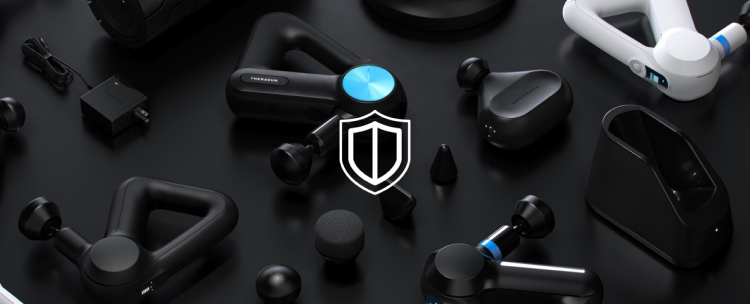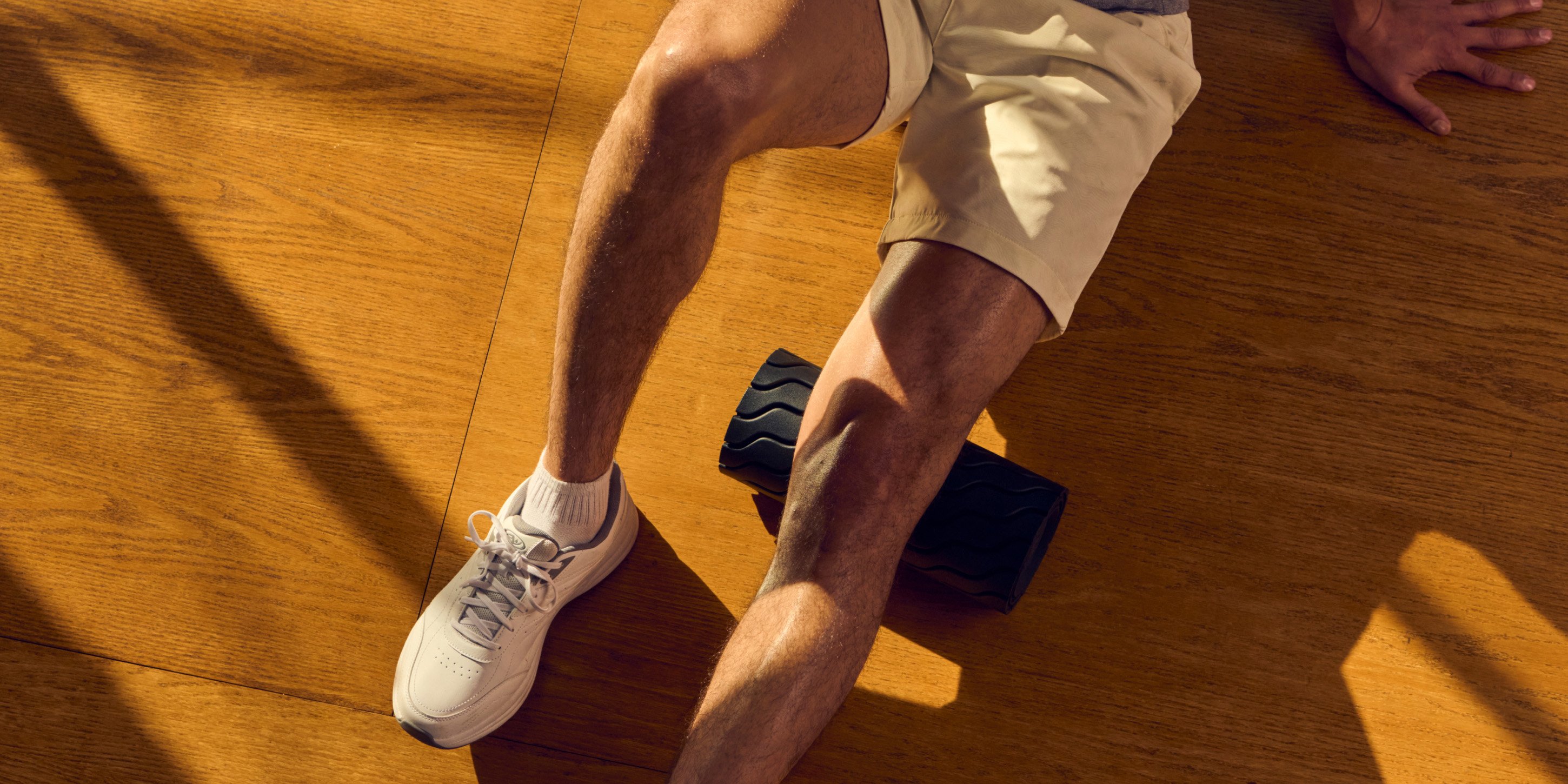Authors: Therabody Scientists: Tim Roberts, MSc; Rachelle Reed, PhD, MS, ACSM-EP; Kyle Silvey, PhD, CSCS; Michelle Darian, MS, MPH, RD, LDN
The gentle hum of vibration has long been used for healing. Now, modern research is uncovering just how influential these oscillations can be. The buzz of a phone or the faint internal pulse you feel when music is blaring are all forms of vibration. These back-and-forth motions have been used to improve health and well-being for ages — dating back to ancient Rome and Greece. Vibration therapy rose in popularity among physicians during the 19th century and gained momentum in the world of sports performance within the last 50 years. [1] It stood the test of time as the repetitive stimulation was believed to improve blood flow and increase muscle tone. [2]
Now, vibration therapy is more accessible through portable, at-home devices. Technology has made vibration popular among many groups, from people who are on their feet all day at work, to adults with aches and pains, and even those looking to recover from a workout. Here, we break down exactly what vibration therapy is and explain its science-backed benefits — showing why it is used among diverse audiences.
What Is Vibration Therapy?
Vibration therapy uses mechanical vibrations that contact the skin and stimulate muscles and joints. These rapid oscillations lead to quick and repeated muscle contractions. The higher the frequency, the more rapid the oscillations are in a given time, meaning the therapy will generally feel more intense at higher frequencies. [1]
Vibration therapy may improve overall health by: [1]
- Mimicking the body’s natural muscle reflexes, like those used during physical therapy.
- Dilating blood vessels around the treatment area and improving blood flow, so muscles can get more oxygen and nutrients and theoretically recover more efficiently.
- Promoting neuromuscular control — the process in which the nervous system activates and controls movements by the body. This helps the body to perform movements like jumping, pivoting, and landing with more control and precision.
A device can deliver either whole-body vibrations while standing, sitting, or holding onto something, or localized vibrations, where a device is placed on a specific muscle like your thigh, calf, or back.
Localized vibration therapy is available through at-home technology. For example, a small handheld device can be used on your area of choice, wearable bands can be wrapped around your abdomen or knee, and vibrating foam rollers are also available.
Now, let’s dive in to eight science-backed benefits of vibration therapy.
1. Enhanced Exercise Performance
Using vibration therapy can help your muscles perform better during exercise. Research shows that regularly using vibration therapy can improve muscle strength and power, joint flexibility, and range of motion. [3]
How does this work? Vibration physically activates the muscles, promoting strength and power. However, vibration therapy doesn’t just target the muscles. It also causes adaptations in the nervous system, which controls these muscles. Vibration helps the nerves to better coordinate the use of muscles, improving both muscle and joint stability during movements. [3]
2. Improved Circulation
Improving blood flow and circulation can greatly benefit overall health. Healthy circulation supports tissue healing, vital for recovering quickly after exercise or an injury. It’s also associated with improved skin longevity, immune health and inflammation, and even your cardiovascular system, which pumps blood between your heart and lungs. [4]
Research shows that using vibration therapy (even for short periods of time) can significantly increase short-term skin blood flow, a non-invasive way to assess blood circulation. [4]
3. Increased Flexibility
A key benefit of whole-body vibration therapy is its ability to break up adhesions or scar tissue that may be limiting your flexibility By activating sensory receptors in the muscles and joints, vibration signals them to relax and release tension, helping you to feel more limber. [5]
Improved blood flow to muscles and tissues associated with vibration therapy helps to reduce the viscosity of synovial fluid of the joint — it’s like greasing a door hinge — making movements smoother. [5]
4. Decrease Delayed Onset Muscle Soreness (DOMS)
The soreness or stiffness you may feel for days after a strenuous workout is called delayed onset muscle soreness (DOMS). It’s usually a sign that some muscle damage has occurred — which is a normal response to a particularly strenuous or new type of workout. The discomfort associated with severe and persistent DOMS oftentimes limits the duration and intensity of your next workout. [6]
Similar to how vibration therapy improves flexibility (relaxing muscles and improving blood flow), vibration can help ease DOMS and help your muscles recover. [6]
5. More Efficient Cardiovascular Recovery
During a strenuous workout, your heart rate increases, and your heart and lungs work harder to pump blood and deliver oxygen to your skeletal muscles. Following a workout, cardiovascular recovery refers to the body’s ability to restore its heart rate and adequate blood flow to tissues after a stressor (in this case, exercise). The goal is to have a more efficient cardiovascular recovery, which is typically linked to higher fitness levels. [7]
Research shows that even 10 minutes of vibration therapy post-workout can help shift the body’s nervous system into a more relaxed state by decreasing the cardiac sympathetic nerve activity and promoting parasympathetic nerve activity. This change helps to move the body out of “fight or flight" mode and into “rest and digest," signaling recovery. [7]
6. Chronic Pain Relief
Musculoskeletal pain — pain in the bones, muscles, joints, tendons, and ligaments — affects about 47% of the general population. Often, this pain can interfere with daily activities, socializing, and even mood. [8]
For decades, vibration therapy has been known to relieve pain. A landmark study from 1984 found that 59% of 267 people with chronic musculoskeletal and nerve-related pain found pain relief with vibration therapy. Of those who found relief, 72% reported having a more vibrant social life, and half reported decreasing pain medication use. [9]
7. Improved Sleep
Trying to fall asleep while feeling stressed out can make it all the more difficult. A racing heart and mind don’t equate to a peaceful slumber.
Vibration therapy can help to lull you to sleep. It feels physically and mentally relaxing, and research shows it can actually help you fall asleep faster and get more restful sleep. [10, 11]
8. Headache Relief
Headaches and migraines can come on fast and strong. While everyone has their own tricks to help manage discomfort (whether that’s lying in a dark room, placing a cold compress on your head, etc.), vibration therapy can be another useful tool.
Vibration therapy can help to reduce pain in those experiencing headaches, even after just five minutes. [12] Another study found that vibration therapy effectively reduced pain from sinus headaches. [13]
This therapy can also relieve pain in other areas of the head. Pain in the temporomandibular joint (TMJ) often stems from tension or inflammation in the jaw from stress, grinding teeth, and trauma. Applying vibration therapy to certain trigger points can provide some pain relief. [14]
What’s the Difference Between Vibration Therapy and Percussive Therapy?
Vibration therapy should feel calming, relaxing, and gentle. These devices deliver a continuous hum to your muscles.
It is a distinct feeling from percussive therapy. Percussive therapy (the treatment that massage guns provide) combines pressure and vibration therapy. The result is more intense. Instead of only the hum of vibration, a strong motor also creates a targeted, tapping sensation of percussion. [15]
However, there are some overlapping benefits, as both therapies improve circulation, recovery, and muscle health. You can read more about percussive therapy’s benefits here.
Key Takeaways
- Vibration therapy is a longstanding therapy that helps relax muscles, improve blood flow, and activate the nervous system.
- Because of these mechanisms, vibration therapy is proven to support exercise performance, improve muscle flexibility, improve sleep, and alleviate soreness, pain, and headaches.
- Localized vibration devices, such as handheld massagers, wearable bands, and vibrating foam rollers, are portable and can be used at home.
- The benefits of vibration therapy make it a useful tool for diverse groups like athletes, people with aches and pains, and those looking to recover from workouts.
References:
- https://pubmed.ncbi.nlm.nih.gov/16230984/
- https://www.ncbi.nlm.nih.gov/pmc/articles/PMC9925023/
- https://pubmed.ncbi.nlm.nih.gov/30662072/
- https://pubmed.ncbi.nlm.nih.gov/17261985/
- https://www.ncbi.nlm.nih.gov/pmc/articles/PMC6533098/
- https://www.ncbi.nlm.nih.gov/pmc/articles/PMC4127040/
- https://pubmed.ncbi.nlm.nih.gov/34267582/
- https://www.ncbi.nlm.nih.gov/pmc/articles/PMC8119532/
- https://pubmed.ncbi.nlm.nih.gov/6436774/ [Lundberg]
- https://pubmed.ncbi.nlm.nih.gov/29871584/
- https://pubmed.ncbi.nlm.nih.gov/33367712/
- https://pubmed.ncbi.nlm.nih.gov/25546476/
- https://pubmed.ncbi.nlm.nih.gov/37621300/
- https://pubmed.ncbi.nlm.nih.gov/33354268/
- https://www.ncbi.nlm.nih.gov/pmc/articles/PMC10069390







